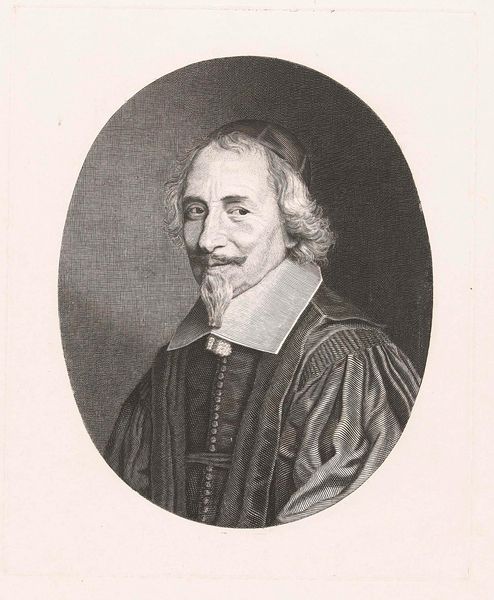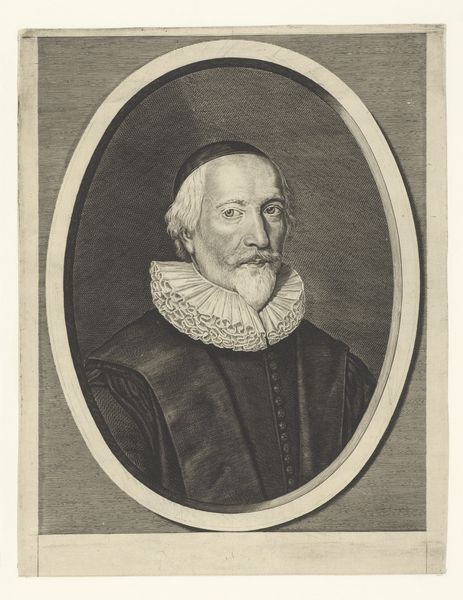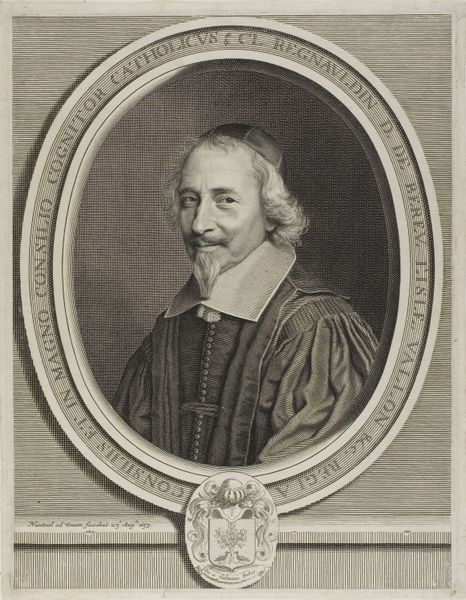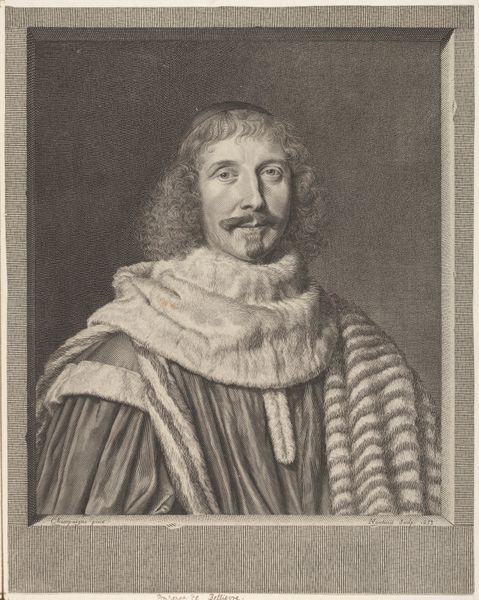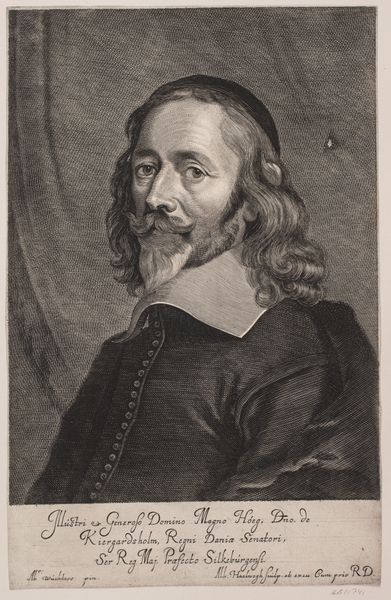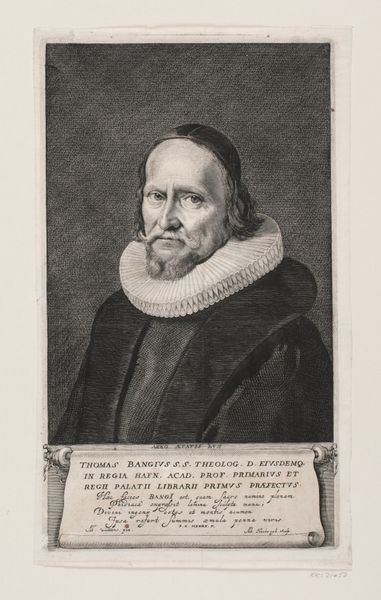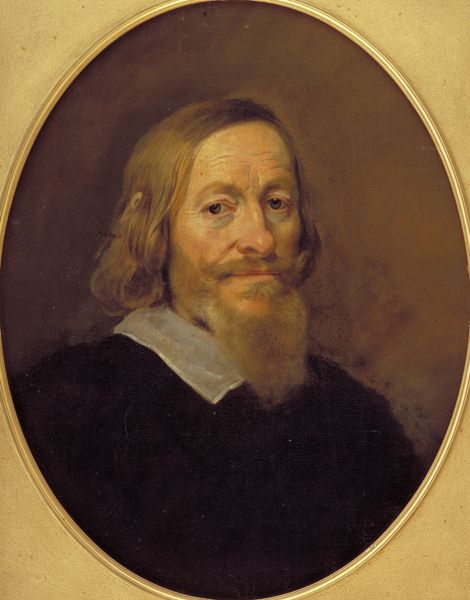
painting, oil-paint
#
portrait
#
baroque
#
portrait
#
painting
#
oil-paint
#
academic-art
#
realism
Dimensions: support height 67.1 cm, support width 57 cm, outer size depth 6.5 cm
Copyright: Rijks Museum: Open Domain
Editor: So, here we have Michiel Jansz. van Mierevelt’s 1639 oil painting, "Portrait of Jacob Cats". It's currently housed in the Rijksmuseum. My first impression is that the painting exudes a certain…seriousness. What stands out to you about this piece? Curator: Well, looking at this portrait through a contemporary lens, particularly thinking about representation and power, it’s important to unpack the historical context. Jacob Cats was a highly influential political figure and poet in the Dutch Golden Age. A portrait like this wasn't just a likeness; it was a carefully constructed statement of status and authority. Notice the meticulous detail in his collar, for instance. What might that suggest? Editor: That this person belongs to the elites? He's wealthy enough to wear fancy garments? Curator: Exactly. The lace collar is a clear marker of wealth, but beyond that, it also reflects the social and economic hierarchies of the time. This era in the Netherlands witnessed a rising merchant class and intense negotiations around identity, civic duty and the relationship between the individual and the collective. Think about how that burgeoning capitalist system might have influenced the art of portraiture. Editor: So the portrait isn't just of a person, it’s about communicating ideas about Dutch society at that moment in history? Curator: Precisely. And consider who was *not* being portrayed. Where are the portraits of the working class, of women, or of colonized people in the Dutch East Indies, whose exploitation fueled this wealth? The absence is deafening, isn't it? These portraits often functioned to solidify a very specific narrative of Dutch power. What did you think of the dark colors and serious demeanor? Editor: They also solidify an image of masculine authority. Looking at it that way, the painting definitely has new resonance. Curator: It shows us how art, even something as seemingly straightforward as a portrait, is always embedded in complex webs of social, political, and economic power dynamics. We can find new questions even in an artwork that's centuries old!
Comments
No comments
Be the first to comment and join the conversation on the ultimate creative platform.






